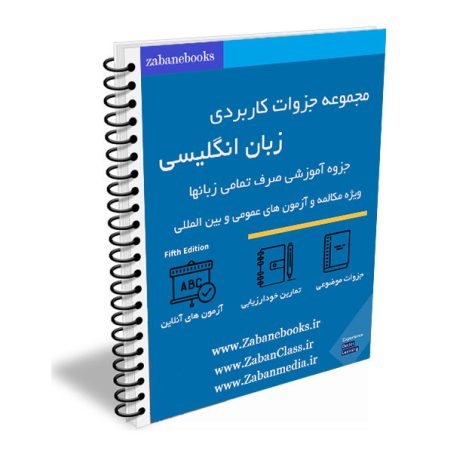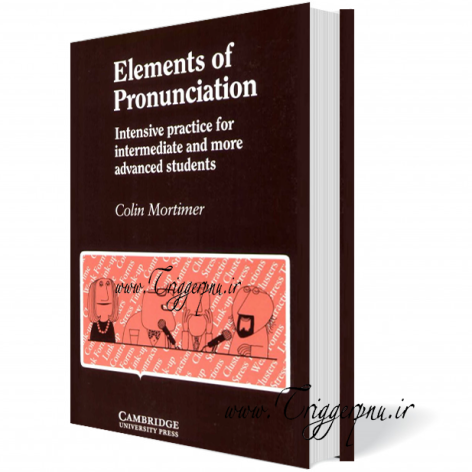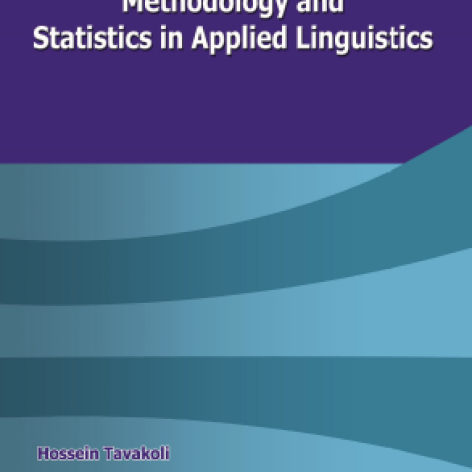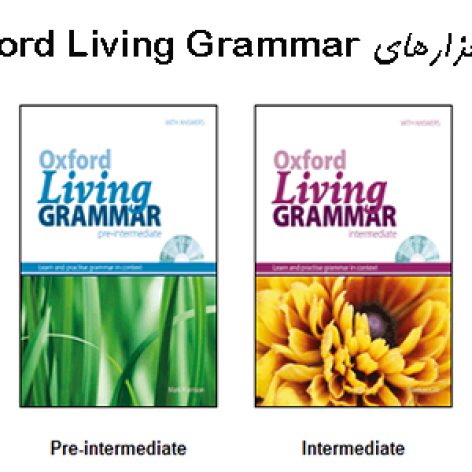
مجموعه ایUndrestanding and Using English Grammar تحت قلم Betty Azar، منتشر شده از انتشارات لانگمن است که بدون شک می توان آن را یکی از کامل ترین و روان ترین کتاب های آموزش گرامر زبان انگلیسی دانست. در این پست ویرایش چهارم فایل های آموزش فلش مجموعه بر روی سایت قرار گرفته است. در این کتاب به شیوه ای بسیار جالب و موثر به آموزش زمان های انگلیسی پرداخته شده است، و با استفاده از یک سری نمودارها به تشریح زمانهای گذشته، حال، آینده و مشتقات آنها مثل گذشته استمراری، حال استمراری و … پرداخته است. از نقاط قوت دیگر این کتاب بر خلاف بسیاری از کتاب های دستور زبان انگلیسی، کامل و جامع بودن آن است. بدین معنی که همراه کتاب حاضر علاوه بر کتاب دانش آموز، راهنمای تدریس دبیر، سی دی های صوتی و کتاب کار نیز ارایه شده است. این موضوع باعث شده که کتاب حاضر به یکی از مراجع آموزش گرامر در جهان تبدیل شود. همچنین در سیر آموزش گرامر سعی شده است تا همواره جذابیت مباحث آموزشی حفظ شود و در این راستا از مثال ها و تمرین های کاربردی به همراه پاسخ آنها کمک گرفته شده است.در ادامه لیست فلش ها قرار دارد.
فهرست فایل های فلش
Hide Course Introduction
Course Intro
Chapter 1—Present Time
FEGi 1-0 Overview
FEGi 1-1a The simple present and the present progressive
FEGi 1-1b The simple present and the present progressive
FEGi 1-2 Forms of the simple present and the present progressive
FEGi 1-3 Frequency adverbs
FEGi 1-4 Final -s
FEGi 1-5 Spelling of final -s/-es
FEGi 1-6 Non-action verbs
FEGi 1-7 Present verbs: short answers to yes/no questions
Chapter 2—Past Time
FEGi 2-0 Overview
FEGi 2-1 Expressing past time: the simple past
FEGi 2-2 Forms of the simple past: regular verbs
FEGi 2-3 Forms of the simple past: be
FEGi 2-4 Regular verbs: pronunciation of -ed endings
FEGi 2-5 Spelling of -ing and -ed endings
FEGi 2-6 The principal parts of a verb
FEGi 2-7 Irregular verbs: a reference list
FEGi 2-8 The simple past and the past progressive
FEGi 2-9 Forms of the past progressive
EGi 2-10 Expressing past time: using time clauses
FEGi 2-11 Expressing past habit: used to
Chapter 3—Future Time
FEGi 3-0 Overview
FEGi 3-1 Expressing future time: be going to and will
FEGi 3-2 Forms with be going to
FEGi 3-3 Forms with will
FEGi 3-4a Sureness about the future
FEGi 3-4b Sureness about the future
FEGi 3-5 Be going to vs. will
FEGi 3-6 Expressing the future in time clauses and if-clauses
FEGi 3-7 Using the present progressive to express future time
FEGi 3-8 Using the simple present to express future time
FEGi 3-9 Immediate future: using be about to
FEGi 3-10 Parallel verbs
Chapter 4—The Present Perfect and The Past Perfect
FEGi 4-0 Overview
FEGi 4-1 Past participle
FEGi 4-2 Forms of the present perfect
FEGi 4-3 Meanings of the present perfect
FEGi 4-4 Simple past vs. present perfect
FEGi 4-5 Using since and for
FEGi 4-6 Present perfect progressive
FEGi 4-7 Present perfect progressive vs. present perfect
FEGi 4-8 Using already, yet, still, and anymore
FEGi 4-9 Past perfect
Chapter 5—Asking Questions
FEGi 5-0 Overview
FEGi 5-1 Yes/no questions and short answers
FEGi 5-2 Yes/no questions and information questions
FEGi 5-3 Where, why, when, and what time
FEGi 5-4 Questions with who, who(m), and what
FEGi 5-5 Spoken and written contractions with question words
FEGi 5-6 Using what + a form of do
FEGi 5-7 Using what kind of
FEGi 5-8 Using which
FEGi 5-9 Using whose
FEGi 5-10 Using how
FEGi 5-11 Using how often
FEGi 5-12 Using how far
FEGi 5-13 Length of time: it + take and how long
FEGi 5-14 More questions with how
FEGi 5-15 Using how about and what about
FEGi 5-16 Tag questions
Chapter 6—Nouns and Pronouns
FEGi 6-0 Overview
FEGi 6-1 Pronunciation of final -s/-es
FEGi 6-2 Plural forms of nouns
FEGi 6-3 Subjects, verbs, and objects
FEGi 6-4 Objects of prepositions
FEGi 6-5 Prepositions of time
FEGi 6-6 Word order: place and time
FEGi 6-7 Subject-verb agreement
FEGi 6-8 Using adjectives to describe nouns
FEGi 6-9 Using nouns as adjectives
FEGi 6-10 Personal pronouns: subjects and objects
FEGi 6-11 Possessive nouns
FEGi 6-12 Possessive pronouns and adjectives
FEGi 6-13 Reflexive pronouns
FEGi 6-14 Singular forms of other: another vs. the other
FEGi 6-15 Plural forms of other: others(s) vs. the other(s)
FEGi 6-16 Summary of forms of other
Chapter 7—Modal Auxiliaries
FEGi 7-0 Overview
FEGi 7-1 The form of modal auxiliaries
FEGi 7-2 Expressing ability: can and could
FEGi 7-3 Expressing possibility: may and might / Expressing permission: may and can
FEGi 7-4 Using could to express possibility
FEGi 7-5 Polite questions: may I, could I, can I
FEGi 7-6 Polite questions: would you, could you, will you, can you
FEGi 7-7 Expressing advice: should and ought to
FEGi 7-8 Expressing advice: had better
FEGi 7-9 Expressing necessity: have to, have got to, must
FEGi 7-10 Expressing lack of necessity: do not have to / Expressing prohibition: must not
FEGi 7-11 Making logical conclusions: must
FEGi 7-12 Giving instructions: imperative sentences
FEGi 7-13 Making suggestions: let’s and why don’t
FEGi 7-14 Stating preferences: prefer, like… better, would rather
Chapter 8—Connecting Ideas
FEGi 8-0 Overview
FEGi 8-1 Connecting ideas with and
FEGi 8-2 Connecting ideas with but and or
FEGi 8-3 Connecting ideas with so
FEGi 8-4 Using auxiliary verbs after but and and
FEGi 8-5 Using and + too, so, either, neither
FEGi 8-6 Connecting ideas with because
FEGi 8-7 Connecting ideas with even though/although
Chapter 9—Comparisons
FEGi 9-0 Overview
FEGi 9-1 Making comparisons with as… as
FEGi 9-2 Comparative and superlative
FEGi 9-3 Comparative and superlative forms of adjectives and adverbs
FEGi 9-4 Completing a comparative
FEGi 9-5 Modifying comparatives
FEGi 9-6 Comparisons with less… than and not as… as
FEGi 9-7 Unclear comparisons
FEGi 9-8 Using more with nouns
FEGi 9-9 Repeating a comparative
FEGi 9-10 Using double comparatives
FEGi 9-11 Using superlatives
FEGi 9-12 Using the same, similar, different, like, alike
Chapter 10—The Passive
FEGi 10-0 Overview
FEGi 10-1 Active sentences and passive sentences
FEGi 10-2 Form of the passive
FEGi 10-3 Transitive and intransitive verbs
FEGi 10-4 Using the by-phrase
FEGi 10-5 The passive forms of the present and past progressive
FEGi 10-6 Passive modal auxiliaries
FEGi 10-7 Using past participles as adjectives (stative passive)
FEGi 10-8 Participial adjectives: -ed vs. -ing
FEGi 10-9 Get + adjective; get + past participle
FEGi 10-10 Using be used/accustomed to and get used/accustomed to
FEGi 10-11 Used to vs. be used to
FEGi 10-12 Using be supposed to
Chapter 11—Count/Noncount Nouns and Articles
FEGi 11-0 Overview
FEGi 11-1 A vs. AN
FEGi 11-2 Count and noncount nouns
FEGi 11-3 Noncount nouns
FEGi 11-4 More noncount nouns
FEGi 11-5 Using several, a lot of, many/much, and a few/a little
FEGi 11-6 Nouns that can be count or noncount
FEGi 11-7 Using units of measure with noncount nouns
FEGi 11-8a Guidelines for article usage
FEGi 11-8b Guidelines for article usage
FEGi 11-9 Using THE or ∅ with names
FEGi 11-10 Capitalization
Chapter 12—Adjective Clauses
FEGi 12-0 Overview
FEGi 12-1 Adjective clauses: introduction
FEGi 12-2 Using who and whom in adjective clauses
FEGi 12-3 Using who, who(m), and that in adjective clauses
FEGi 12-4 Using which and that in adjective clauses
FEGi 12-5 Singular and plural verbs in adjective clauses
FEGi 12-6 Using prepositions in adjective clauses
FEGi 12-7 Using whose in adjective clauses
Chapter 13—Gerunds and Infinitives
FEGi 13-0 Overview
FEGi 13-1 Verb + gerund
FEGi 13-2 Go + -ing
FEGi 13-3 Verb + infinitive
FEGi 13-4 Verb + gerund or infinitive
FEGi 13-5 Preposition + gerund
FEGi 13-6 Using by and with to express how something is done
FEGi 13-7 Using gerunds as subjects; using it + infinitive
FEGi 13-8 It + infinitive: using for (someone)
FEGi 13-9 Expressing purpose with in order to and for
FEGi 13-10 Using infinitives with too and enough
Chapter 14—Noun Clauses
FEGi 14-0 Overview
FEGi 14-1 Noun clauses: introduction
FEGi 14-2 Noun clauses that begin with a question word
FEGi 14-3 Noun clauses with who, what, whose + be
FEGi 14-4 Noun clauses that begin with if or whether
FEGi 14-5 Noun clauses that begin with that
FEGi 14-6 Other uses of that-clauses
FEGi 14-7 Substituting so for a that-clause in conversational responses
FEGi 14-8 Quoted speech
FEGi 14-9 Quoted speech vs. reported speech
FEGi 14-10 Verb forms in reported speech
FEGi 14-11 Common reporting verbs: tell, ask, answer/reply
Appendix 1—Phrasal Verbs
FEGi A1-1 Phrasal verbs: introduction
FEGi A1-2 Phrasal verbs: intransitive
FEGi A1-3 Three-word phrasal verbs
FEGi A1-4 Phrasal verbs: a reference list
Appendix 2—Preposition Combinations
FEGi A2-1 Preposition combinations: introduction
FEGi A2-2 Preposition combinations: a reference list
محتویات بسته




















